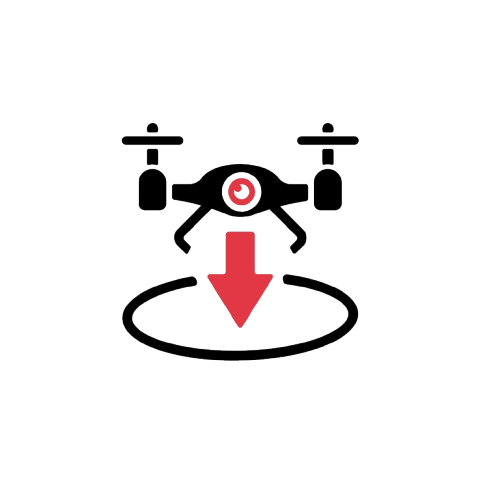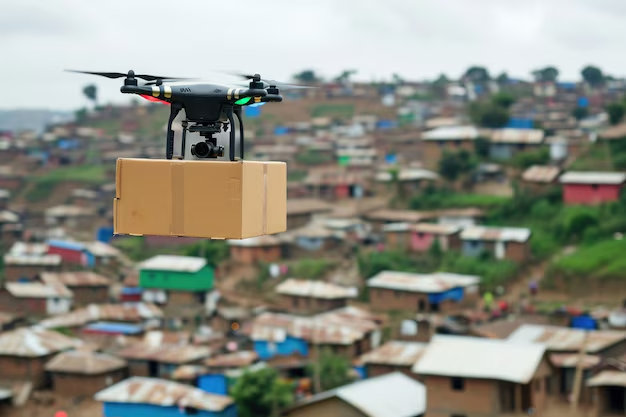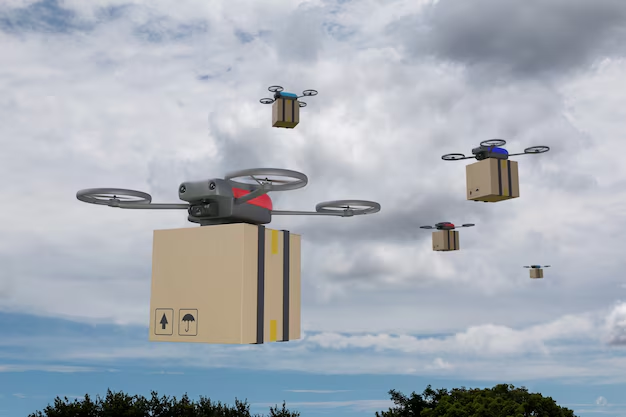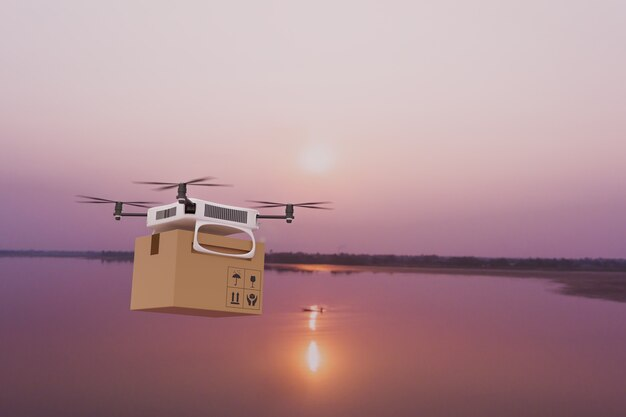Getting medical supplies where they need to go should be straightforward. Still, hospitals and clinics have depended on bicycles, motorbikes, and vans for decades to move everything from blood samples to vaccines. Though effective, these techniques are costly, sluggish, and sometimes untrustworthy in distant locations.
Enter drone delivery service—a quicker, more environmentally friendly option now saving lives in countries like the UK and Rwanda. But is it genuinely superior to conventional logistics? Examining speed, cost, accessibility, and environmental effect, let us compare the two side by side.
1. Speed: Racing Against the Clock
Medical crises are one area where every minute matters. A patient requiring a blood transfusion cannot wait hours for a courier trapped in traffic. A remote clinic shouldn’t have to stop immunizations if the delivery vehicle fails. Traditional distribution relies on roads, weather, and traffic. A 10-mile journey can take more than an hour during rush hour, even in cities. In rural locations, poor roads or floods can postpone deliveries for days.
The drone delivery service has changed the game. Avoiding traffic and uneven terrain, drones fly directly to their objective. Drones in Rwanda carry blood to distant hospitals in under thirty minutes, a journey that formerly took four hours by vehicle. Using drones to carry chemotherapy medications in minutes rather than hours, the NHS has experienced comparable success.
Who won? By a landslide, drones.
2. Cost: Breaking Down the Expenses
Budgets for healthcare are limited, and logistics consume a significant portion. Traditional approaches call for cars, gasoline, drivers, and maintenance—expenses that accumulate quickly. Medical courier services in the U.S. charge 20–20–50 per trip without considering delays or unsuccessful deliveries.
Conversely, drone delivery pricing is reasonable. Drones use only power; they need no drivers or gasoline. A UK study indicated that, over time, drones might reduce delivery costs by 30 to 50%. Rwanda’s drone network provides blood for just a few dollars every flight, significantly less than motorcycle couriers.
Naturally, drones are not free. They need trained operators, software, and charging stations. For high-priority delivery, however, the long-term savings are difficult to overlook. Who triumphs? While conventional techniques still manage bulk shipments better, drones prevail on efficiency.
3. Accessibility: Reaching the Unreachable
Some locations are simply difficult to access. War zones, highlands, and islands often depend on sluggish, erratic supply lines. Trucks can’t get through, and thus, 1 in 5 health facilities in Ghana ran out of vaccines. Here, conventional logistics falter. Roads could not exist, or they could be inaccessible. Motorcycles can carry little but help.
Drones delivering medical supplies fix this. They fly over disaster zones, woods, and rivers without a second thought. Drones in Malawi bring HIV tests to roadless communities. Scotland is testing drones to deliver defibrillators to cardiac arrest sufferers quicker than ambulances.
Who won? No question, drones.
4. Environmental Impact: Which Is Greener?
Healthcare logistics account for 4.4% of worldwide CO2 emissions, a significant concern for hospitals seeking to go green. While motorcyclists pollute in congested cities, diesel vehicles and vans consume fuel.
Advantages of drones is that they produce almost zero emissions. Operating on batteries rather than petrol, they generate 90% less CO2 than a delivery vehicle. The NHS figures that switching to drones might save several tonnes of carbon annually. Not all of them are awful; conventional techniques are getting better with electric vans. For now, though, drones are the more environmentally friendly option.
Who triumphs? Drones, no question.
5. Reliability: What Happens When Things Go Wrong?
Conventional delivery has alternatives. Should a vehicle fail, another one can take control. Still, delays occur—bad weather, flat tires, and road congestion can all destroy cargo.
Drones carry their hazards. They might get grounded by high winds or rain. Battery life restricts range; payloads are modest (about 2–4 kg). Technology, however, is advancing quickly. Charging stations are rising in far-off places; new drones manage inclement weather. Who wins? It’s a tie: while conventional techniques manage bulk better, drones shine in crises.
6. Temperature Control: Keeping Medicine Safe in Transit
Many medical supplies—vaccines, blood products, insulin—require rigorous temperature control. While traditional techniques rely on refrigerated trucks, failures do occur. A Dutch study indicated that drone delivery of temperature-sensitive drugs was in better condition than road delivery. Drones fly with phase-change materials in specific containers, maintaining ideal temperatures. No traffic delays indicate no danger of spoiling. This is revolutionary for rural clinics without consistent refrigeration. Although trucks still carry big loads, drones are better for urgent, temperature-sensitive deliveries where every degree counts.
7. The Human Factor: How Workers Adapt to Drone Delivery
Switching to drones alters the way medical personnel operate. While doctors and nurses require training to manage drone delivery, couriers fear job losses. Healthcare professionals in Rwanda first opposed drones until they witnessed life saved. They now actively seek drone delivery. Integration is essential; drones are just another tool in the supply chain; they don’t replace people. Staff members learn to ask for, get, and monitor drone deliveries like conventional items. Though the change takes time, when employees notice vital medications arriving more quickly, opposition usually transforms to excitement. It’s not about replacing people but about enabling them to perform their jobs better.
8. Regulatory Hurdles: Why Drones Aren’t Everywhere Yet
If drones are so wonderful, why isn’t every hospital employing them? The greatest obstacle is rules. Most nations limit drone operations close to airports or congested regions. Progress is sluggish, but the FAA in the United States and the EASA in Europe are gradually developing regulations for medical delivery drones.
Another difficulty is insurance: who covers a drone crash? After witnessing drones save lives, some nations like Rwanda simplified their rules. Some are still wary. Widespread adoption will be restricted until regulations catch up with technology. Every successful pilot program, however, strengthens the argument for amending these rules. The future is approaching, just not as quickly as the drones themselves.
Conclusion
Which is better then—delivery by drone or conventional logistics? That varies. Drones win for eco-friendliness, accessibility, and speed. They’re ideal for quick emergency supplies, vaccines, or blood transfers. Traditional techniques still have their place for heavy loads or inclement weather. One thing is sure: drones are not the future; they are presently present, saving lives.
Want to see how drone delivery cost could work for your healthcare needs? Learn more at BulBulDelivery.

















